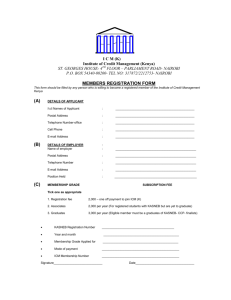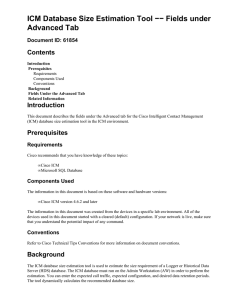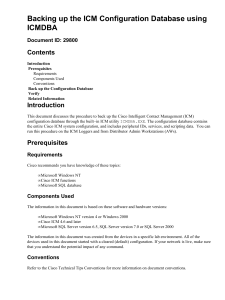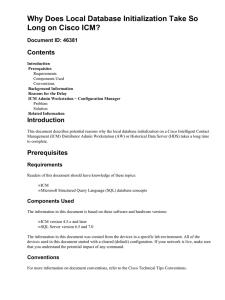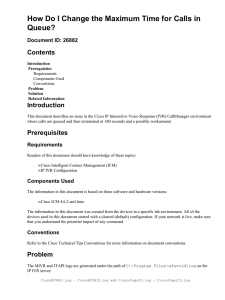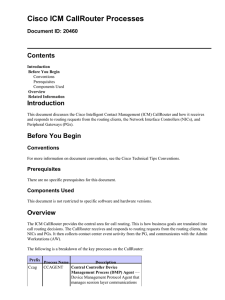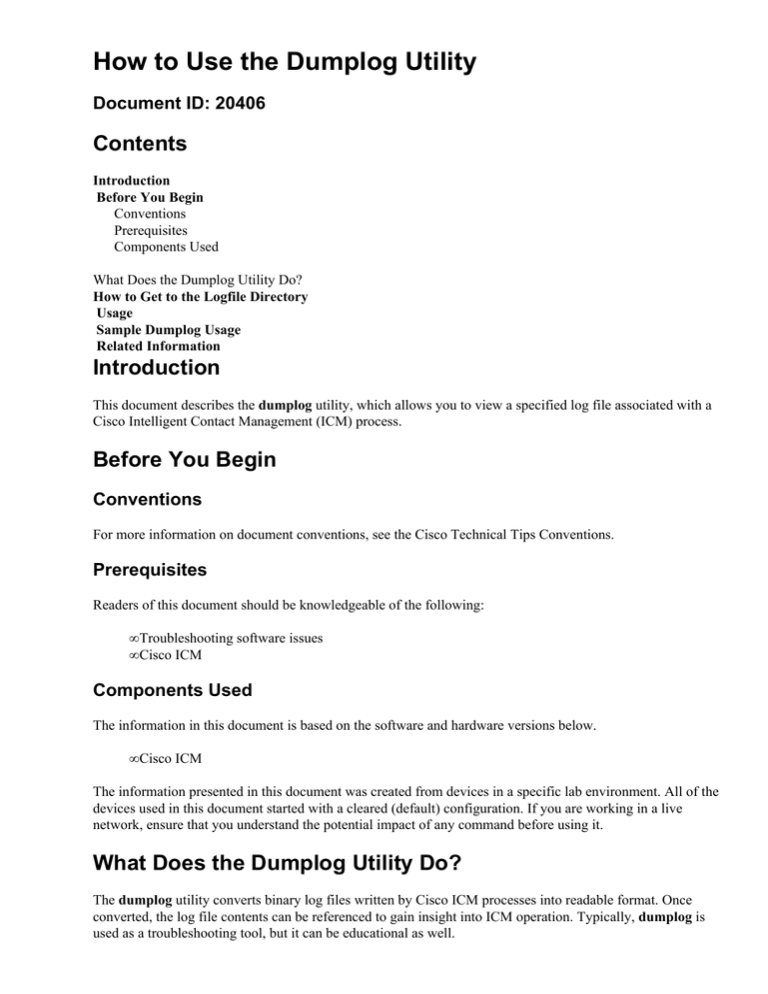
How to Use the Dumplog Utility
Document ID: 20406
Contents
Introduction
Before You Begin
Conventions
Prerequisites
Components Used
What Does the Dumplog Utility Do?
How to Get to the Logfile Directory
Usage
Sample Dumplog Usage
Related Information
Introduction
This document describes the dumplog utility, which allows you to view a specified log file associated with a
Cisco Intelligent Contact Management (ICM) process.
Before You Begin
Conventions
For more information on document conventions, see the Cisco Technical Tips Conventions.
Prerequisites
Readers of this document should be knowledgeable of the following:
• Troubleshooting software issues
• Cisco ICM
Components Used
The information in this document is based on the software and hardware versions below.
• Cisco ICM
The information presented in this document was created from devices in a specific lab environment. All of the
devices used in this document started with a cleared (default) configuration. If you are working in a live
network, ensure that you understand the potential impact of any command before using it.
What Does the Dumplog Utility Do?
The dumplog utility converts binary log files written by Cisco ICM processes into readable format. Once
converted, the log file contents can be referenced to gain insight into ICM operation. Typically, dumplog is
used as a troubleshooting tool, but it can be educational as well.
The dumplog utility can be invoked from either a command prompt directly on the ICM server, or from a
Telnet session to the ICM server.
Note: The following examples assume that ICM is installed on the C drive. If the ICM is installed on a
different drive, then directory locations will change accordingly.
For server naming conventions used in this document please see ICM Server Naming Conventions.
How to Get to the Logfile Directory
The path to the Cisco ICM logfile directory is <root>\icr\customer instance name\node
name.
Where <root> is the drive where ICM is installed, for example, C, D, or E.
For example, if you consider that Cisco ICM Call Router is installed on the C drive, the logfile directory on
geocscortra would be located at: c:\icm\csco\rtra\logfiles.
Note: The following can be used as a shortcut to the logfiles directory: c:\>cdlog <cust_inst>
<ICM_Node>.
Usage
Below are command line options for the dumplog utility. They can help you solve problems by allowing you
to view Cisco ICM log files within a specific time period. The time period is definable using the /bd, /bt, /ed,
and /et switches. The user can also search for a specific string to further isolate and troubleshoot questionable
ICM behavior.
This information can also be found in the "Cisco Intelligent Call Router Administrator Guide."
dumplog [ProcessName(s)] [/dir Dirs] [/if InputFile] [/o]
[/of OutputFile]
[/c] [/bd BeginDate(mm/dd/yyyy)] [/bt BeginTime(hh:mm:ss)]
[/ed EndDate(mm/dd/yyyy)] [/et EndTime(hh:mm:ss)] [/hr HoursBack]
[/all] [/last] [/prev] [bin] [/m MatchString] [/x ExcludeString] [/ms] [/debug]
[/help] [?]
ProcessName(s) The command dumps the current day log for this process, unless you specify different dates
or times with other arguments. [/dir Dirs] Directory specifies the location of the log files for any processes
listed on the command line after the /dir switch. If no /dir switch is used, the current directory is used by
default. [/if] InputFile specifies a specific .ems file to dump. The /if token is optional. If you specify an
input file, the /bd, /bt, /ed, /et, /hr, and /all arguments are ignored. /o Writes output to a text file in
the \logfiles directory. The filename is formed by adding the .txt suffix to the specified process prefix
or input file name (without the .ems suffix). The file is written to the current directory. /of OutputFile
specifies an output text file; for example, c:\temp\mylog.txt. /c Specifies continuous output. The command
does not exit after reaching the end of the log. Instead, it waits and writes any further entries that appear in the
log. /bd BeginDate(mm/dd/yyyy) specifies the begin date. If used with /bt, this specifies a range of
dates. Otherwise, dumplog dumps events for only the specified date. /bt BeginTime(hh:mm:ss)
specifies the begin time. Use with /et to specify a range of time. /ed EndDate(mm/dd/yyyy) specifies
the end date. Use with /bd to specify a range of days. /et EndTime(hh:mm:ss) specifies the end time.
Use with /bt to specify a range of time. /hr HoursBack specifies a number of hours back from the current
time. /all Displays all information from the specified process log files. /last Displays information from the
most recent log file for the process. /prev Displays information from the next to last log file for the process.
/m MatchString displays only events that contain a match for the specified string. /x ExcludeString
displays only events that do not contain a match for the specified string. [/ms] Displays milliseconds in time
stamps. [/mc] Use multiple colors when dumping merged logs. Each process is given a different color. You
must specify either a ProcessPrefix or an InputFile. If you give only a ProcessPrefix value (for
example, rtr, nm, or lgr), dumplog displays the current day log for that process by default.
Note: To view redirected log files using Microsoft Notepad, save the log file to a text file (using the dumplog
/of argument), and open the text file from the command prompt by issuing the: notepad filename command.
Sample Dumplog Usage
The following example shows the dumping of the rtr log file on the router from the beginning of April 29,
1999 until April 30, 1999. It outputs to a log file called rtr.txt. The file rtr.txt can now be viewed
using a standard text editor such as Notepad.
c:\icm\csco\rtra\logfiles dumplog rtr /bd 04/29/1999 /ed 04/30/1999 /o
The following command dumps the pgag log file from a peripheral gateway (PG) beginning at the last time a
new log file was open for output.
c:\icm\csco\rtra\logfiles dumplog pgag /last
Related Information
• Technical Support − Cisco Systems
Contacts & Feedback | Help | Site Map
© 2014 − 2015 Cisco Systems, Inc. All rights reserved. Terms & Conditions | Privacy Statement | Cookie Policy | Trademarks of
Cisco Systems, Inc.
Updated: Sep 19, 2005
Document ID: 20406

